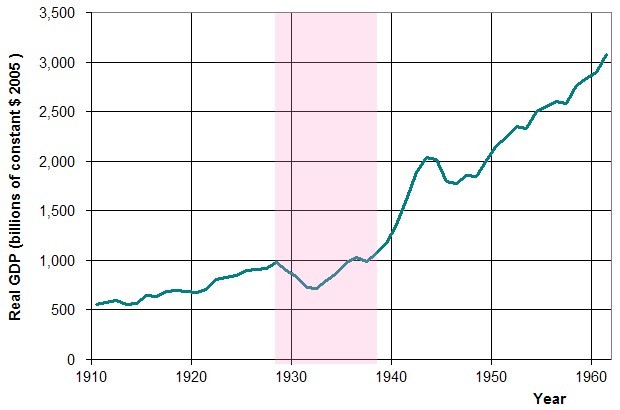Bfgrn
Gold Member
- Apr 4, 2009
- 16,829
- 2,492
- 245
Sorry bfgrn, can't say as I totally understand what your saying here. The CATO Institute website has a Briefing Paper about Herbert Hoover, the following is from the execuive summary:
Politicians and pundits portray Herbert Hoover as a defender of laissez faire governance whose dogmatic commitment to small government led him to stand by and do nothing while the economy collapsed in the wake of the stock market crash in 1929. In fact, Hoover had long been a critic of laissez faire. As president, he doubled federal spending in real terms in four years. He also used government to prop up wages, restricted immigration, signed the Smoot-Hawley tariff, raised taxes, and created the Reconstruction Finance Corporationall interventionist measures and not laissez faire. Unlike many Democrats today, President Franklin D. Roosevelt's advisers knew that Hoover had started the New Deal. One of them wrote, "When we all burst into Washington ... we found every essential idea [of the New Deal] enacted in the 100-day Congress in the Hoover administration itself."
Hoover's big-spending, interventionist policies prolonged the Great Depression, and similar policies today could do similar damage. Dismantling the mythical presentation of Hoover as a "do-nothing" president is crucial if we wish to have a proper understanding of what did and did not work in the Great Depression so that we do not repeat Hoover's mistakes today.
Herbert Hoover: Father of the New Deal | Steven Horwitz | Cato Institute: Briefing Paper
Well, here is your problem, and Steven Horwitz' problem...HERBERT HOOVER in his own words:
Contemplating in retrospect the wreck of his countrys economy and his own presidency, Herbert Hoover wrote bitterly in his memoirs about those who had advised inaction during the downslide:
The leave-it-alone liquidationists headed by Secretary of the Treasury Mellon felt that government must keep its hands off and let the slump liquidate itself. Mr. Mellon had only one formula: Liquidate labor, liquidate stocks, liquidate the farmers, liquidate real estate. He held that even panic was not altogether a bad thing. He said: It will purge the rottenness out of the system. High costs of living and high living will come down. People will work harder, live a more moral life. Values will be adjusted, and enterprising people will pick up the wrecks from less competent people.




